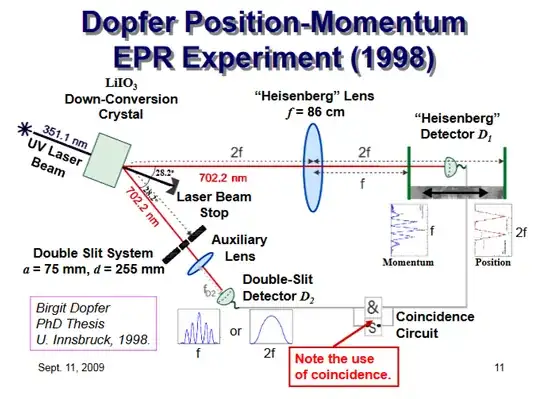Dopfer Momentum-EPR experiment (1998) seems to provide a interesting tweak in the EPR experiment.
To read more details on this experiment, see:
Page 3 (labelled S290) of 'Experiment and the foundations of quantum physics' by Anton Zeilinger
Slide 11 of these slides by John G. Cramer:
- A discussion of the experiment, the coincidence counter, and how the conditions of the no-signaling theorems might not apply to this setup in the vixra paper 'Is Faster Than Light Communication Possible?' by Raymond W. Jensen.
In summary, the experiment sends two entangled photons A and B toward two separate arms. Arm A has a lens and a Heisenberg detector, which can be placed either at the focal plane or the image plane. Arm B is sent on a two-slit filter. The observed results of this experiment are as follows:
1) if the Heisenberg detector at arm A is placed at the focal plane, the output of the two-slit filter at arm B is an interference pattern
2) if the Heisenberg detector at arm A is placed at the image plane (twice the focal plane) the output of the two-slit filter at arm B is an incoherent sum of intensities from each slit
As suggested in the 3rd paper link I posted, if you use time bins, there really doesn't seem to be any need at all to rely on the coincidence counter, as you can study the interference pattern on each time bin in isolation from photons received in other time bins
Am I confused? How is the coincidence count being used at all? notice that the interference pattern is spatial, not temporal!
